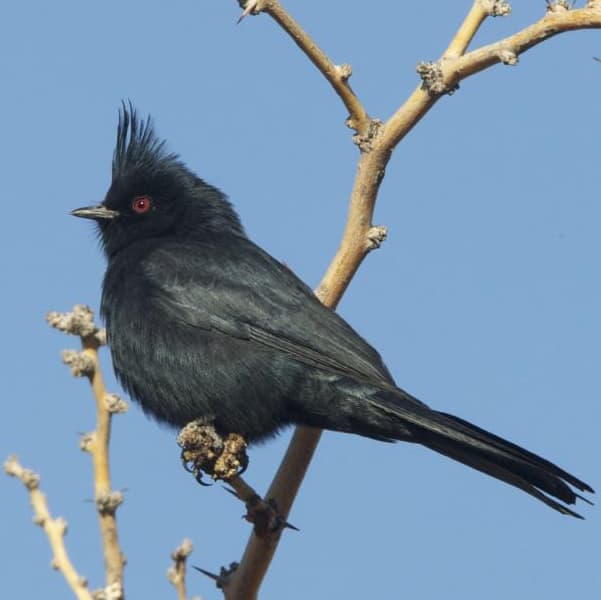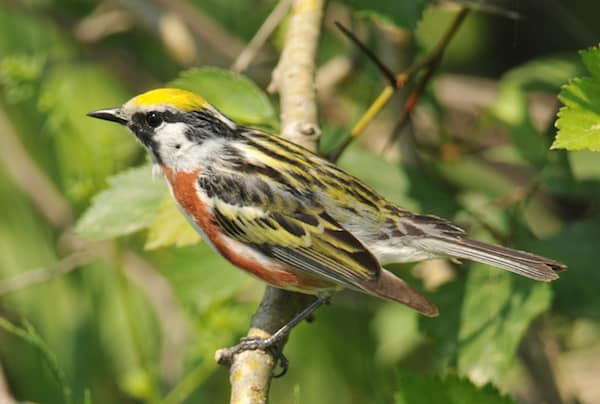Look for
Phainopeplas are a striking, medium-sized songbird with a shaggy crest, a long tail, and a small, thin bill. Males are a glossy black with bold, white wing patches, visible only in flight. Females are gray, with white edging on the wing feathers, but no wing patches. Adults have red eyes. Juveniles resemble females, but with brown eyes.
Listen for
The bird’s vocalizations consist of short phrases, which can include a few flute-like notes, crackling and grating sounds, a harsh churr, and, frequently, wurp, often interspersed with long pauses. As a defense mechanism, a phainopepla may mimic the sounds of other species, especially when to guarding the nest.
Find it
Phainopeplas can be found in open deserts and arid woodlands from northern California through southwestern Texas and into central Mexico. They switch habitats seasonally: From mid-fall through late spring, they reside in desert area. When summer desert heat dries up their food source, they vacate to woodland areas.
Diet
Their diet mainly consists of berries, primarily mistletoe, but they also catch flying insects.
Nesting Behavior
Phainopeplas build nests out of sticks, spider webs, and plant stems. Males do the bulk of construction, often in a highly visible manner, flashing the wing patches, presumably to attract females. Eggs, usually two or three per clutch, are pale yellow/gray with dark speckles. Both parents incubate for about two weeks, and fledging occurs about 20 days after hatching.
WOW!
Phainopeplas are unusual in that they have two breeding seasons per year in two different habitats. In March and April, they nest singly in desert areas. As summer progresses, they relocate to arid woodlands, where they nest in loose colonies from May through August.
Scientists are still studying whether the same individuals that nest in deserts early in the year nest again later in woodlands, or if two distinct populations of phainopepla breed at different times and in different locations. Another possibility is that the phainopeplas that have failed to nest early in the desert are the ones who nest later in the woodlands.




